Like so many of us who are part of the adoption community, we have learned so very much in the time our two youngest kiddos have been part of our family.
Our son, Liam, who is now eight years old, joined our family at the age of 28 months. His special need was listed as “growth retardation”. And while he was and still is a small peanut, his stature has been the least of our concerns. Videos we received before we traveled gave us insight there was probably more than we originally thought.
No worries, we thought.
Mama is a physical therapist and our great big God has done a beautiful job of orchestrating knitting our family together.
Before we traveled I learned as much as I could about cerebral palsy anticipating that would be what we were faced with. And we were right.
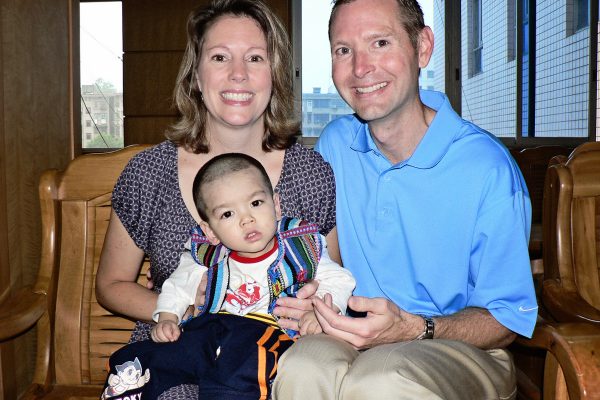
There has been a peace from feeling God’s presence with us every step of the way. And, while at 28 months of age, Liam had to learn how to sit along with all of his other milestones, I felt equipped to support him in that part of his development.
However, shortly after coming home and going through a medical assessment, his providers identified his complete lack of speech in any language. Among all the other brand new challenges, we had never stopped to really think he wasn’t talking let alone babbling.
Speech therapy quickly was added to the list of services now in our week. His speech therapist came to our home and was very kind and very patient. But it was evident she was experiencing great difficulty in eliciting any words let alone sounds from Liam. It was a full three months later at the age of 31 months that she got the /b/ sound. We rejoiced.
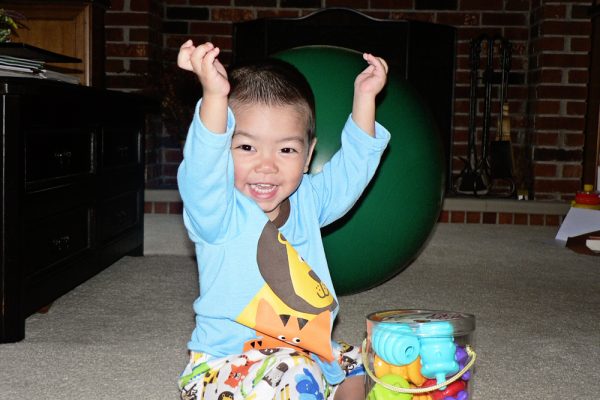
Each sound was many months in the making and each in isolation. We embraced our beloved Alex and Leah in the Signing Time series to provide Liam a means of communication. It was shortly thereafter that his therapist shared the term “Childhood Apraxia of Speech (CAS)”. She was clear it is something not easily diagnosed quite this early (before three years of age) but had a strong hunch.
Like any good parent, I resorted to “Dr. Google” to learn more.
The more I learned the more I felt ill equipped to help my son find his voice. While I was comfortable helping him work towards his gross motor milestones, I had truly no idea how speech even develops. And as I would learn, CAS is best identified by an SLP but most are not officially able to give a diagnosis.
I spent many hours in front of the computer learning all I could about this rare neurological disorder. Many children receive speech services for development delays in speech production. However, CAS is in a completely different ballpark.
Childhood apraxia of speech is best described as a neurological motor speech disorder where the child has difficulty programming and planning speech movements. Our son knew what he wanted to say but was not able to create and execute the motor plan to actually say it. But what is also true is that it has no impact on our son’s ability to understand.
At this point we were transitioning out of the First Steps program and into school based therapy. We were fortunate that everyone genuinely cared for Liam and our family. However, we quickly learned that not every SLP is as well equipped to help a child with CAS find their voice and meet their potential.
Statistics say that something like 1 in 8 children receive speech services for phonological/speech production errors but only 1 in 1000 children have CAS. Translated is that most SLPs do not have the necessary experience of how best to help our children.
What works for a child with a speech production error will not make a difference in a child with CAS. We were grateful through the use of online research to find our “diamond in the rough”. Only an hour from home we learned there was a speech therapist who not only “got it” she teaches what she knows to others. She is on staff at St. Louis University and has her own private practice. She also presents at national conferences teaching others how to treat CAS.
Liam was almost three and a half years old when we met Julie and after an hour together she gave us the answers we had been searching for. His diagnosis was profound childhood apraxia of speech. But even better, she was now able to be part of the solution.
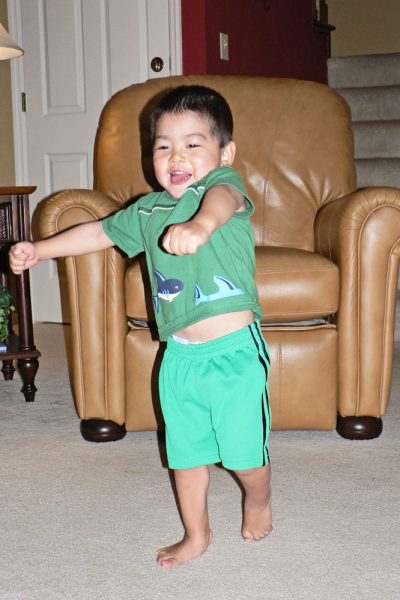
We began seeing Julie on a regular basis happily making the commute to her office. Homework she assigned became a regular part of each day as the goal is to begin laying down motor plans which takes place through repetition. As we learned more about CAS, we learned again how blessed we were in that Liam can best be described as someone who is both patient and persistent.
We had to stop and reflect at how frustrating it must have been for Liam to know what he wanted to say but not be understood. Many children with CAS get overwhelmed with not being able to communicate and often give up trying to do so without much encouragement.
What made life even more interesting is that during this time, Liam was also working to meet his other milestones due to the challenges from his cerebral palsy. There didn’t seem to be enough hours in the day so I became queen of coordinating play time that involved gross motor, fine motor, and speech into a playful activity all while we kept working on attachment.
How is that for multi-tasking!
Most children with CAS, however, have no other identified special need. Some report what is called “clumsy child” syndrome as there does seem to be some core weakness associated with some children with CAS. There also seems to be many who use CAS to define a child with autism who is a non-speaker. Because that isn’t a need I’ve had to learn about I am not well suited to discuss.
Many years have passed since we started on our journey. Liam is now 8 years old and in second grade. We are all blessed by all the amazing people who are part of “Team Liam”.
Over the years I have had to be an advocate for my son in many situations. I have learned a delicate balance between respect and advocacy.
We don’t expect the school or any therapist to do it all.
As Liam’s family, we have done the lion’s share of work at the direction of Julie who we still see every two weeks. We have celebrated every milestone from learning to say “hi” to those coveted words “I love you”.
Liam has three older siblings who developed typically. I have always described Liam as a beautiful flower where we have been witness to each petal opening one at a time. While it has been a lot of work for him and us, there has been something beautiful about watching his development in slow motion.
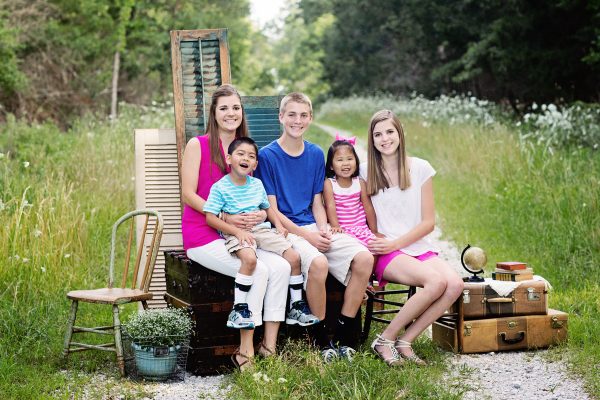
CAS has had an impact on Liam’s learning as well. This past summer I attended an insightful conference hosted by CASANA (Childhood Apraxia of Speech Association of North America). After six years of being Liam’s mama, I am still learning new things about his special needs. I left that conference better understanding the impact that limited early speech has on learning. I returned home with additional information on how to help him beyond speech production and into the classroom.
Many things were already happening as his team is pretty amazing, but I better understood “why” and how to better help at home. Much of what I learned was simple such as how differently we might read a bedtime story to increase his comprehension.
At this time, Liam can be understood by anyone willing to take the time to listen.
He is speaking in short sentences with lots of reminders to use his best speech. At school he sees his amazing school speech therapist four times per week in addition to Julie every two weeks (yes, we have a lot of amazing people in our lives). And while he is in the mainstream classroom most of his day, he does also receive special education services.
We are finding greater academic success when the language used is simplified. His special education teacher has been heaven sent. His entire school team has been open to working together. His classroom teacher even learned the hand signs that accompany the different sounds to help him achieve greater success in the classroom. And of course, we continue to work most nights on our speech homework.
But truthfully, every word out of his mouth is his practice.
And while this isn’t the journey we had anticipated, I truly wouldn’t trade it for the world. I have developed such an appreciation for the smallest of achievements taking nothing for granted.
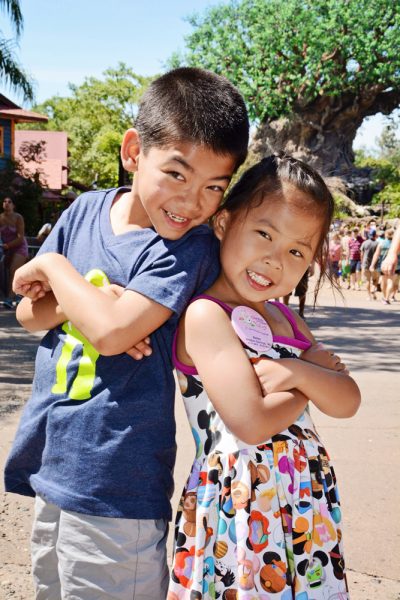
We have met so many wonderful people who we wouldn’t have otherwise had the privilege of knowing. Liam is described by the people who know him as patient, persistent, hard-working, curious, compassionate, funny, and loving.
He is my precious little hero.
He inspires me.
– guest post by Paige

























Leave a Reply